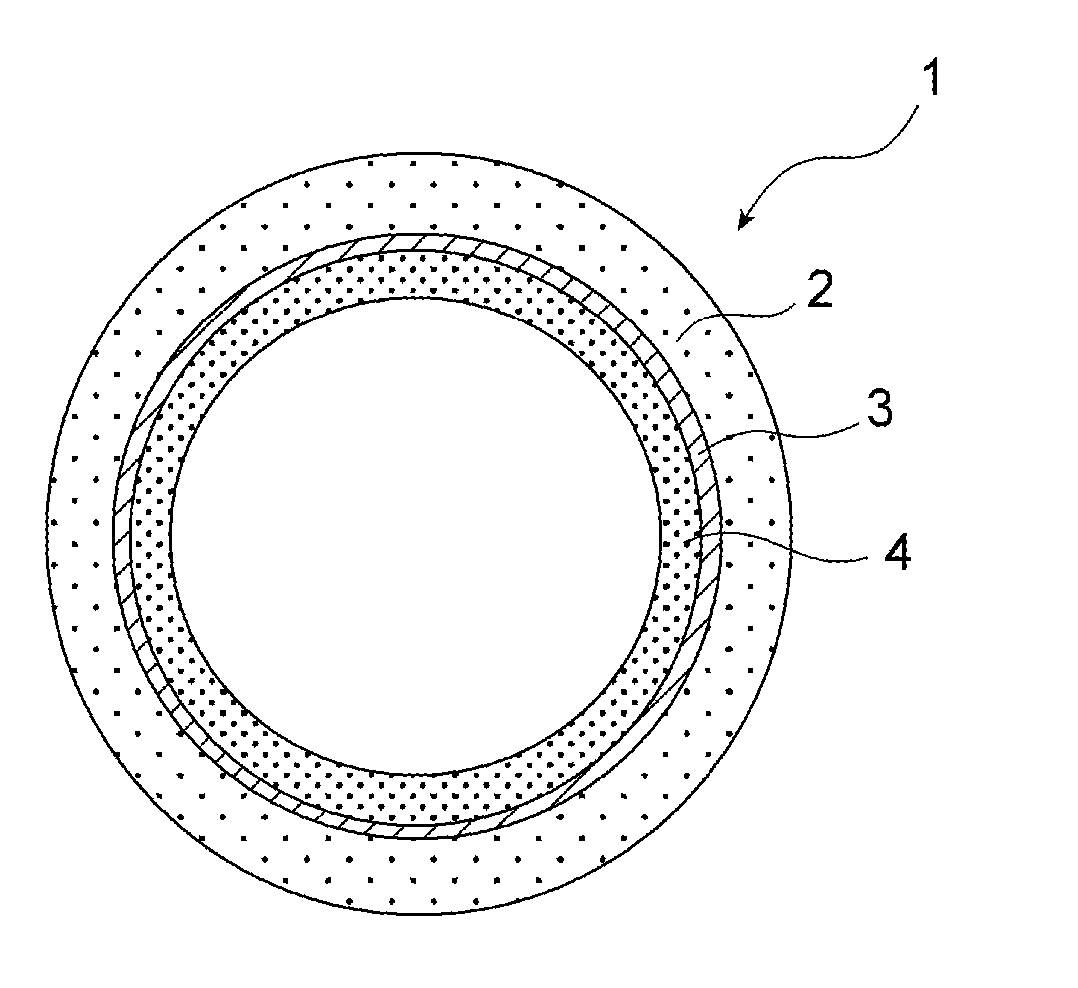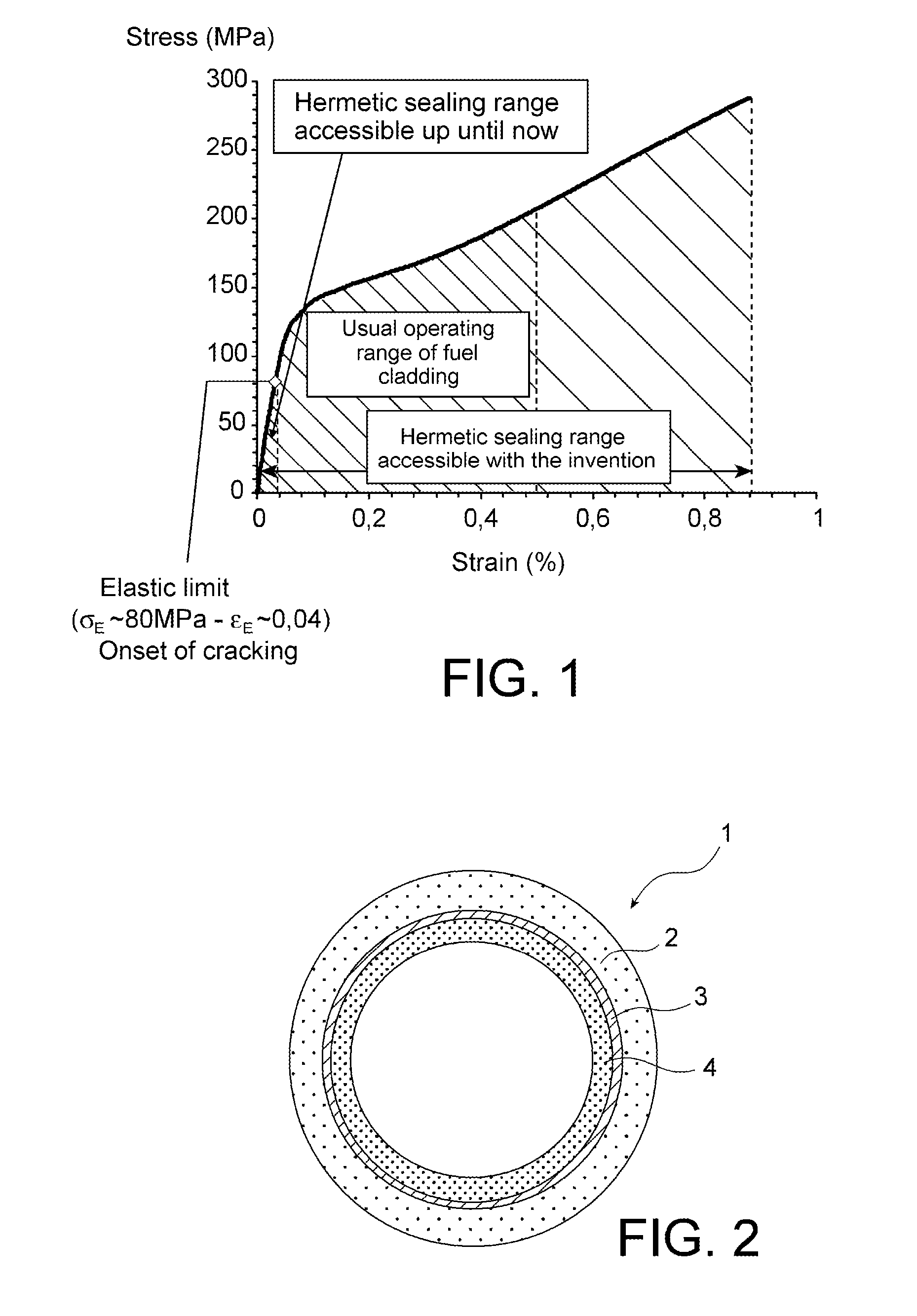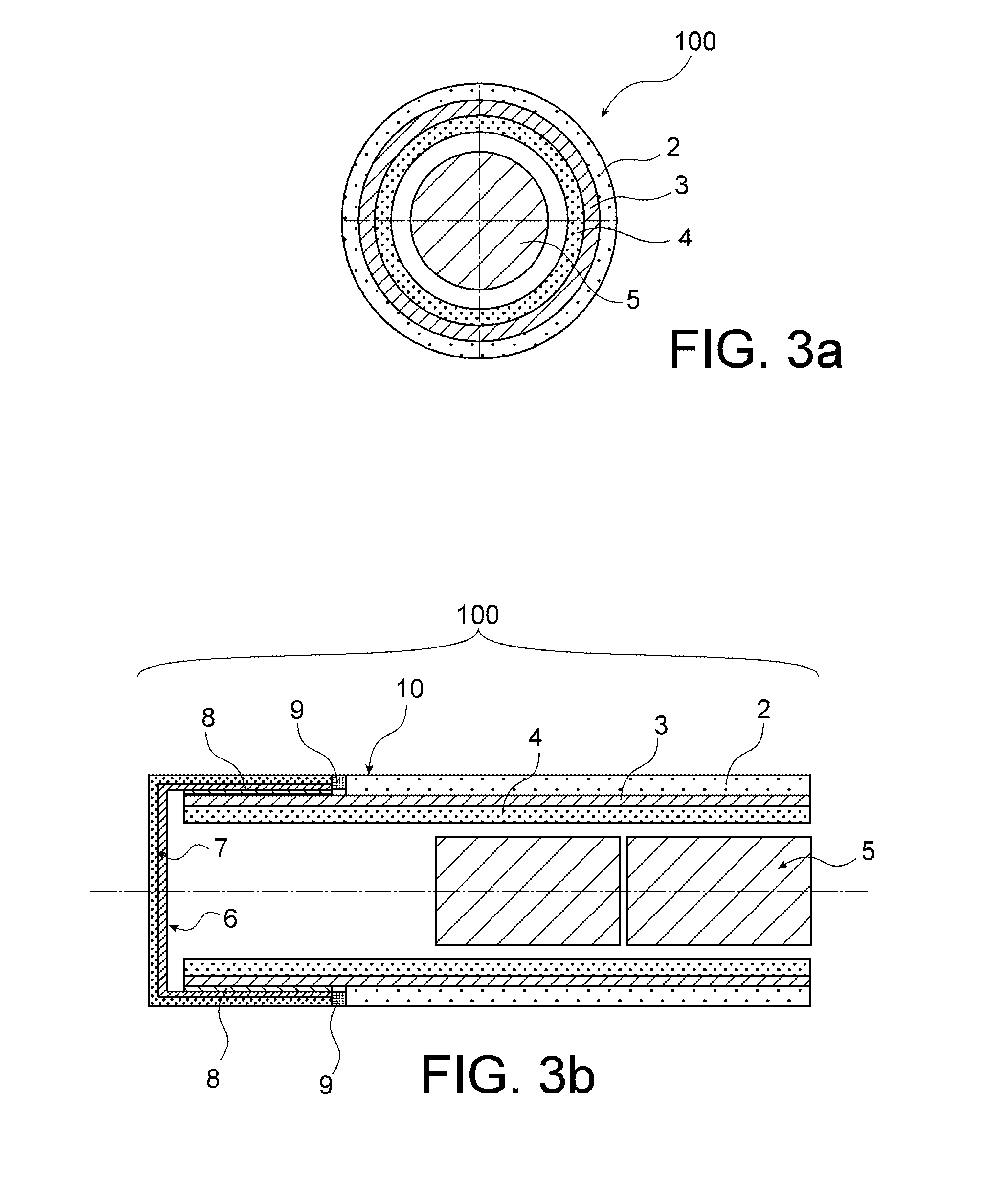Multilayer tube in ceramic matrix composite material, resulting nuclear fuel cladding and associated manufacturing processes
a ceramic matrix composite material and multi-layer tube technology, applied in the direction of reactor fuel elements, lamination, applications, etc., can solve the problems of not being adapted for use as pressure chambers or pressurized conduits, material hermetic over the entire range of potential operation, etc., to achieve good heat conductivity, small temperature difference between sides, and high porosity
- Summary
- Abstract
- Description
- Claims
- Application Information
AI Technical Summary
Benefits of technology
Problems solved by technology
Method used
Image
Examples
Embodiment Construction
[0018]This objective is reached by the invention which firstly proposes a multilayer tubular part comprising a metal layer forming a metal tubular body and two layers in ceramic matrix composite material covering the metal tubular body, characterized in that one of the two layers in ceramic matrix composite material coats the inner surface of the metal tubular body to form an inner tubular body, whilst the other of the two layers in ceramic matrix composite material coats the outer surface of the metal tubular body to form an outer tubular body, the metal tubular body therefore being sandwiched between the inner and outer tubular bodies, the metal tubular body having a mean thickness narrower than the mean thicknesses of the inner and outer tubular bodies.
[0019]The metal tubular body may be in metal or in a metal alloy.
[0020]It is specified that in the foregoing and in the remainder hereof that a ceramic matrix composite material is a material with fibre reinforcement.
[0021]The cros...
PUM
| Property | Measurement | Unit |
|---|---|---|
| thickness | aaaaa | aaaaa |
| thickness | aaaaa | aaaaa |
| temperature | aaaaa | aaaaa |
Abstract
Description
Claims
Application Information
 Login to View More
Login to View More - R&D
- Intellectual Property
- Life Sciences
- Materials
- Tech Scout
- Unparalleled Data Quality
- Higher Quality Content
- 60% Fewer Hallucinations
Browse by: Latest US Patents, China's latest patents, Technical Efficacy Thesaurus, Application Domain, Technology Topic, Popular Technical Reports.
© 2025 PatSnap. All rights reserved.Legal|Privacy policy|Modern Slavery Act Transparency Statement|Sitemap|About US| Contact US: help@patsnap.com



